Front Cover
PREFACE
NOTES FOR SAFE OPERATION
Manual Contents
Manual Structure
Basic Terms
Visual Aids
CONTENTS
1 FOR FIRST-TIME USERS OF AC SERVOS
1.1 Basic Understanding of AC Servos
1.1.1 Servo Mechanisms
1.1.2 Servo Configuration
1.1.3 Features of Sigma-Series Servos
2 BASIC USES OF Sigma-SERIES PRODUCTS
2.1 Precautions
2.1.1 Notes on Use
2.2 Installation
2.2.1 Checking on Delivery
2.2.2 Installing the Servomotor
2.2.3 Installing the Servopack
2.3 Connection and Wiring
2.3.1 Connecting to Peripheral Devices
2.3.2 Main Circuit Wiring and Power ON Sequence
2.3.3 Examples of Connecting I/O Signal Terminals
2.4 Conducting a Test Run
2.4.1 Test Run in Two Steps
2.4.2 Step 1: Conducting a Test Run for Motor without Load
2.4.3 Step 2: Conducting a Test Run with the Motor Connected to the Machine
2.4.4 Supplementary Information on Test Run
2.4.5 Minimum User Constants Required and Input Signals
3 APPLICATIONS OF Sigma-SERIES PRODUCTS
Before Reading this Chapter
3.1 Setting User Constants According to Machine Characteristics
3.1.1 Changing the Direction of Motor Rotation
3.1.2 Setting the Overtravel Limit Function
3.1.3 Restricting Torque
3.2 Setting User Constants According to Host Controller
3.2.1 Inputting Speed Reference
3.2.2 Inputting Position Reference
3.2.3 Using Encoder Output
3.2.4 Using Contact I/O Signals
3.2.5 Using Electronic Gear
3.2.6 Using Contact Input Speed Control
3.2.7 Using Torque Control
3.2.8 Using Torque Feed-forward Function
3.2.9 Using Torque Restriction by Analog Voltage Reference
3.2.10 Using the Reference Pulse Inhibit Function (INHIBIT)
3.2.11 Using the Reference Pulse Input Filter Selection Function
3.3 Setting Up the Sigma Servopack
3.3.1 Setting User Constants
3.3.2 Setting the Jog Speed
3.3.3 Setting the Number of Encoder Pulses
3.3.4 Setting the Motor Type
3.4 Setting Stop Mode
3.4.1 Adjusting Offset
3.4.2 Using Dynamic Brake
3.4.3 Using Zero-Clamp
3.4.4 Using Holding Brake
3.5 Running the Motor Smoothly
3.5.1 Using the Soft Start Function
3.5.2 Using the Smoothing Function
3.5.3 Adjusting Gain
3.5.4 Adjusting Offset
3.5.5 Setting the Torque Reference Filter Time Constant
3.6 Minimizing Positioning Time
3.6.1 Using Autotuning Function
3.6.2 Setting Servo Gain
3.6.3 Using Feed-forward Control
3.6.4 Using Proportional Control
3.6.5 Setting Speed Bias
3.6.6 Using Mode Switch
3.6.7 Using Speed Loop Compensation Function
3.7 Forming a Protective Sequence
3.7.1 Using Servo Alarm Output and Alarm Code Output
3.7.2 Using Servo ON Input Signal
3.7.3 Using Positioning Complete Signal
3.7.4 Using Speed Coincidence Output Signal
3.7.5 Using Running Output Signal
3.7.6 Handling of Power Loss
3.8 Special Wiring
3.8.1 Wiring Instructions
3.8.2 Wiring for Noise Control
3.8.3 Using More Than One Servo Drive
3.8.4 Using Regenerative Units
3.8.5 Using an Absolute Encoder
3.8.6 Extending an Encoder Cable
3.8.7 Using SGDA Servopack with High Voltage Line
3.8.8 Connector Terminal Layouts
4 USING THE DIGITAL OPERATOR
4.1 Basic Operations
4.1.1 Connecting the Digital Operator
4.1.2 Resetting Servo Alarms
4.1.3 Basic Functions and Mode Selection
4.1.4 Operation in Status Display Mode
4.1.5 Operation in User Constant Setting Mode
4.1.6 Operation in Monitor Mode
4.2 Using the Functions
4.2.1 Operation in Alarm Trace-back Mode
4.2.2 Operation Using the Digital Operator
4.2.3 Autotuning
4.2.4 Reference Offset Automatic Adjustment
4.2.5 Speed Reference Offset Manual Adjustment Mode
4.2.6 Clearing Alarm Trace-back Data
4.2.7 Checking Motor Type
4.2.8 Checking Software Version
5 SERVO SELECTION AND DATA SHEETS
5.1 Selecting a Sigma-Series Servo
5.1.1 Selecting a Servomotor
5.1.2 Selecting a Servopack
5.1.3 Selecting a Digital Operator
5.2 SGM Servomotor
5.2.1 Ratings and Specifications
5.2.2 Mechanical Characteristics
5.3 Servopack Ratings and Specifications
5.3.1 Ratings and Specifications
5.3.2 Overload Characteristics
5.3.3 Starting Time and Stopping Time
5.3.4 Load Inertia
5.3.5 Overhanging Loads
5.3.6 In-rush Current and Power Loss
5.4 Sigma-Series Dimensional Drawings
5.4.1 Servomotor Dimensional Drawings
5.4.2 Servopack Dimensional Drawings
5.4.3 Digital Operator Dimensional Drawings
5.5 Selecting Peripheral Devices
5.5.1 Selecting Peripheral Devices
5.5.2 Order List
5.6 Specifications and Dimensional Drawings of Peripheral Devices
5.6.1 Cable Specifications and Peripheral Devices
5.6.2 Motor Cables
5.6.3 Connector Kits
5.6.4 Brake Power Supply
5.6.5 Encoder Cables
5.6.6 Battery for Absolute Encoder
5.6.7 1CN Connector
5.6.8 Connector Terminal Block Converter Unit
5.6.9 Cable With 1CN Connector and One End Without Connector
5.6.10 Circuit Breaker
5.6.11 Noise Filter
5.6.12 Magnetic Contactor
5.6.13 Surge Suppressor
5.6.14 Regenerative Unit
5.6.15 Variable Resistor for Speed Setting
5.6.16 Encoder Signal Converter Unit
5.6.17 Cables for Connecting PC and Servopack
6 INSPECTION, MAINTENANCE,AND TROUBLESHOOTING
6.1 Inspection and Maintenance
6.1.1 Servomotor
6.1.2 Servopack
6.1.3 Replacing Battery for Absolute Encoder
6.2 Troubleshooting
6.2.1 Troubleshooting Problems with Alarm Display
6.2.2 Troubleshooting Problems With No Alarm Display
6.2.3 Internal Connection Diagram and Instrument Connection Examples
Appendix A Differences Between SGDA and SGD Servopacks
Appendix B Servo Adjustment
B.1 Sigma-Series AC Servopack Gain Adjustment
B.1.1 Sigma-Series AC Servopacks and Gain Adjustment Methods
B.1.2 Basic Rules for Gain Adjustment
B.2 Adjusting a Speed-control Servopack
B.2.1 Adjusting Using Auto-tuning
B.2.2 Manual Adjustment
B.3 Adjusting a Position-control Servopack
B.3.1 Adjusting Using Auto-tuning
B.3.2 Manual Adjustment
B.4 Gain Setting References
B.4.1 Guidelines for Gain Settings According to Load Inertia Ratio
Appendix C List of I/O Signals
Appendix D List of User Constants
Appendix E List of Alarm Displays
INDEX
Number
A
B
C
D
E
F
G
H
I
J
L
M
N
O
P
R
S
T
U
V
W
Z
Revision History
Back Cover
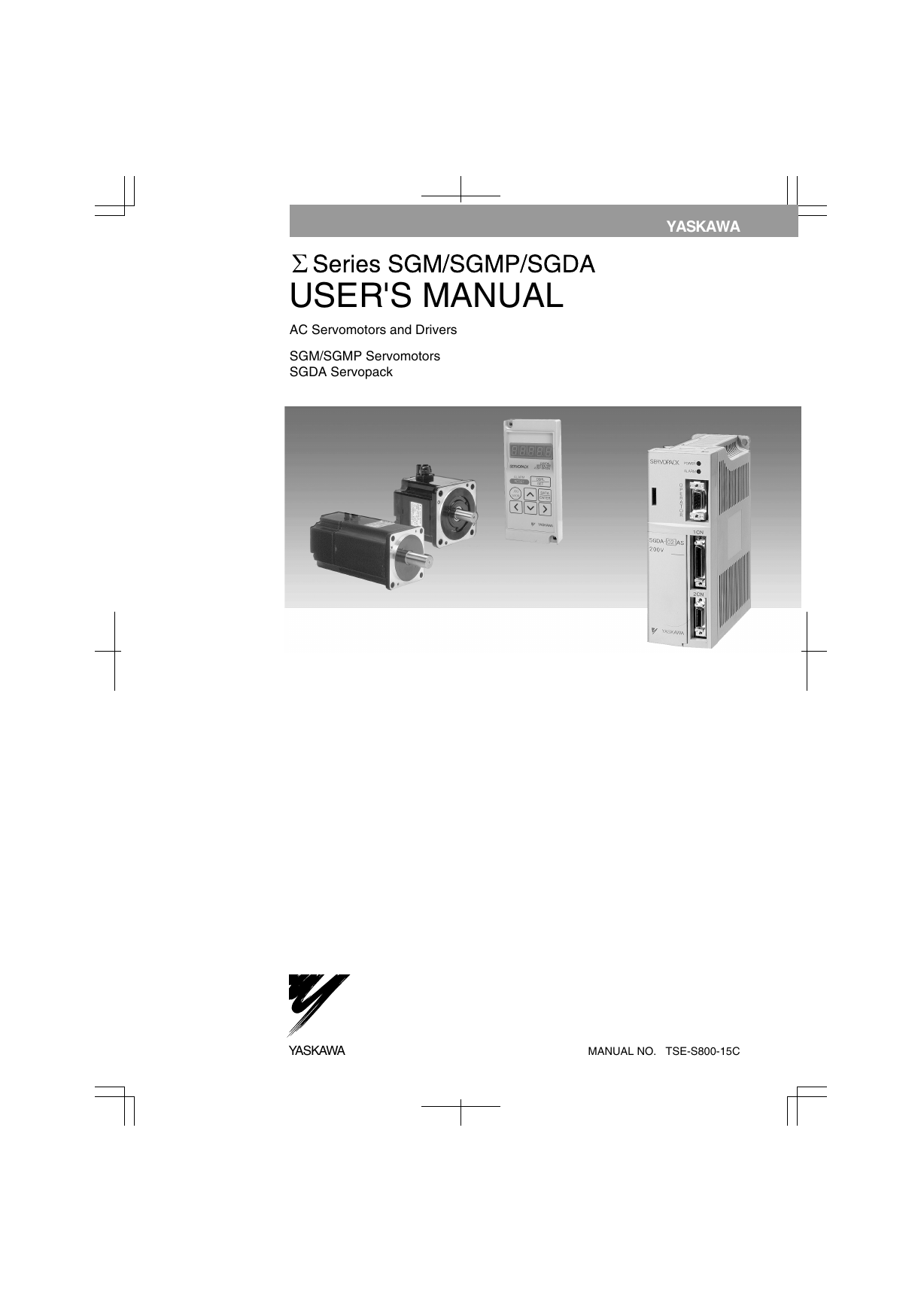

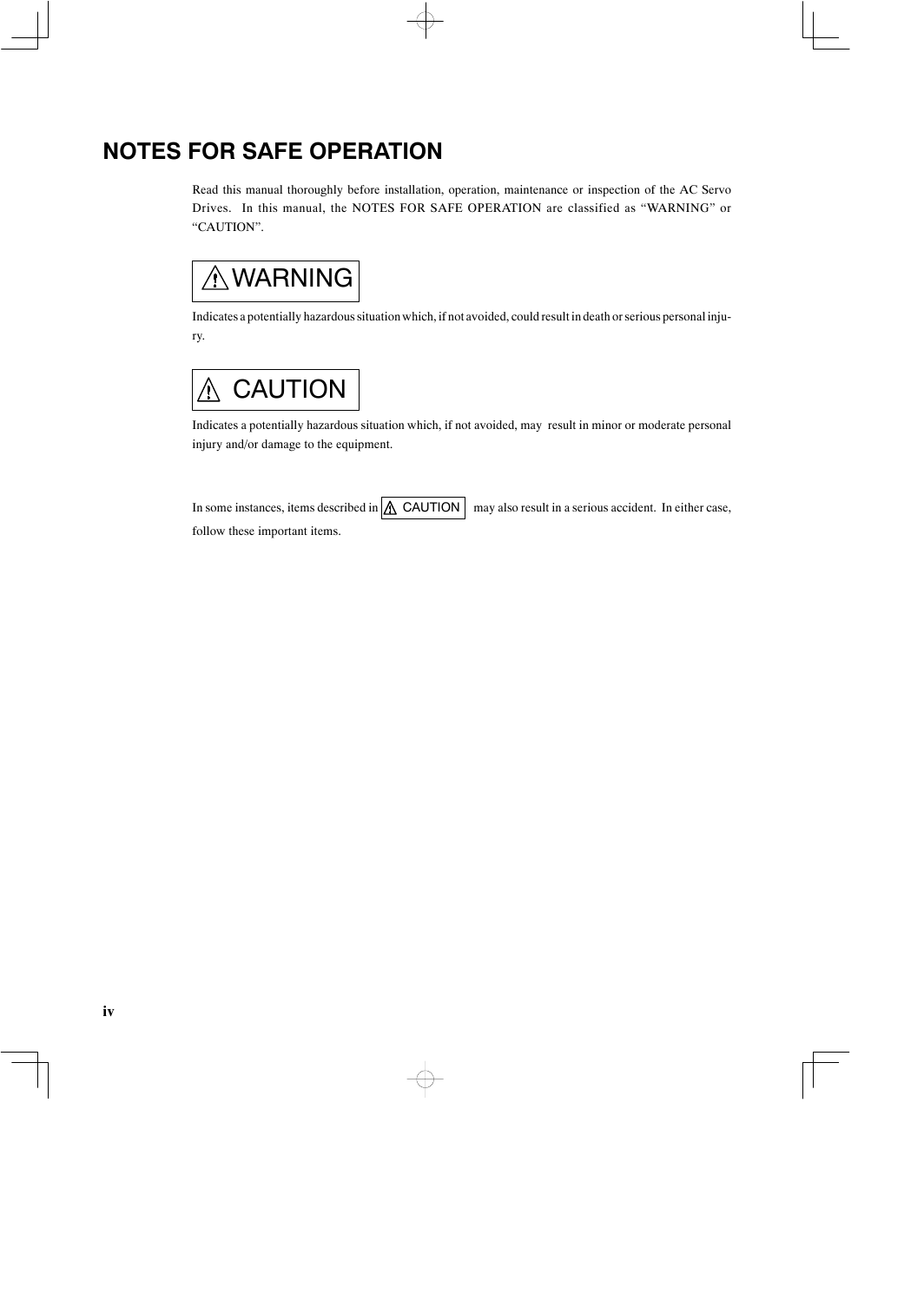
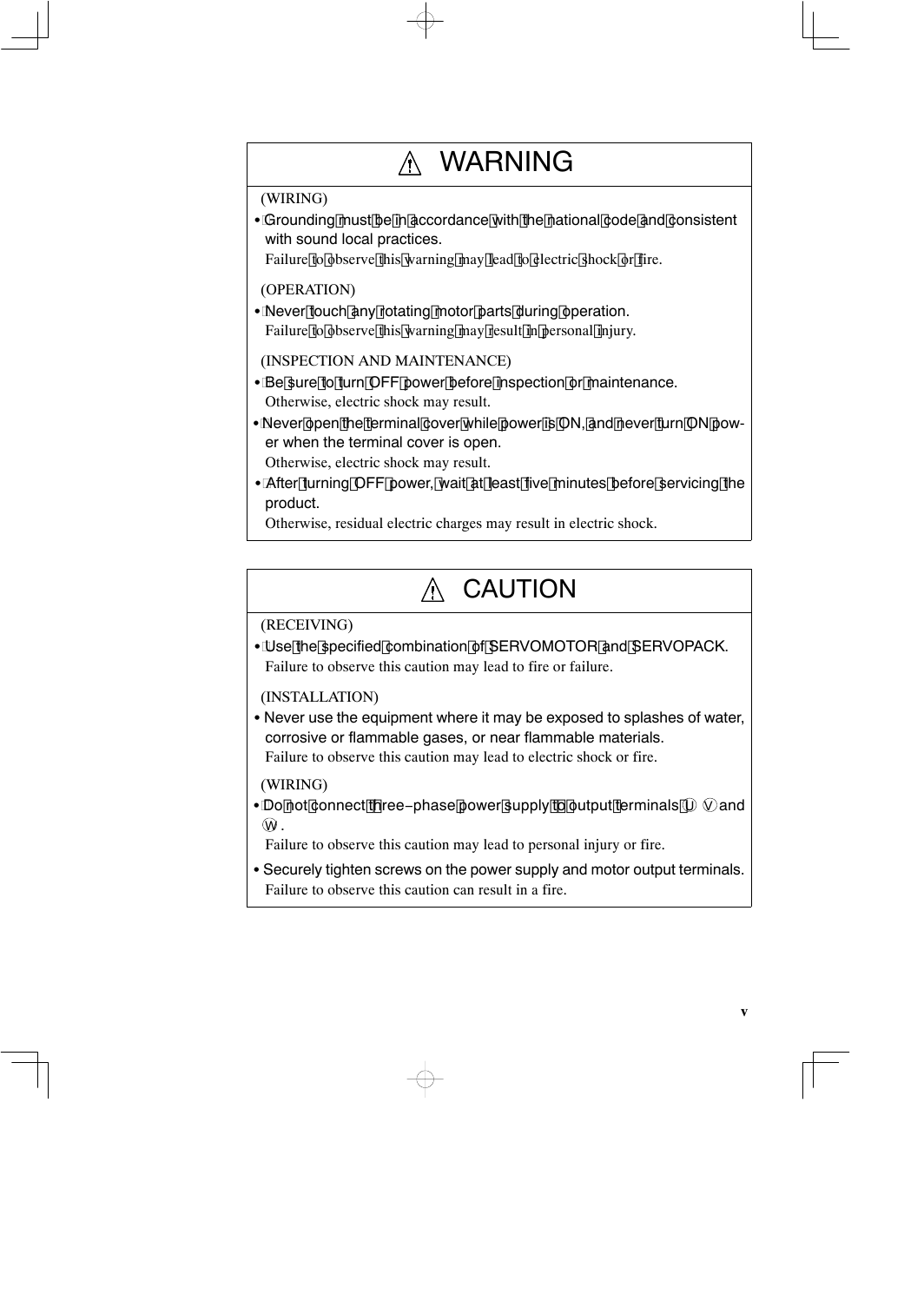
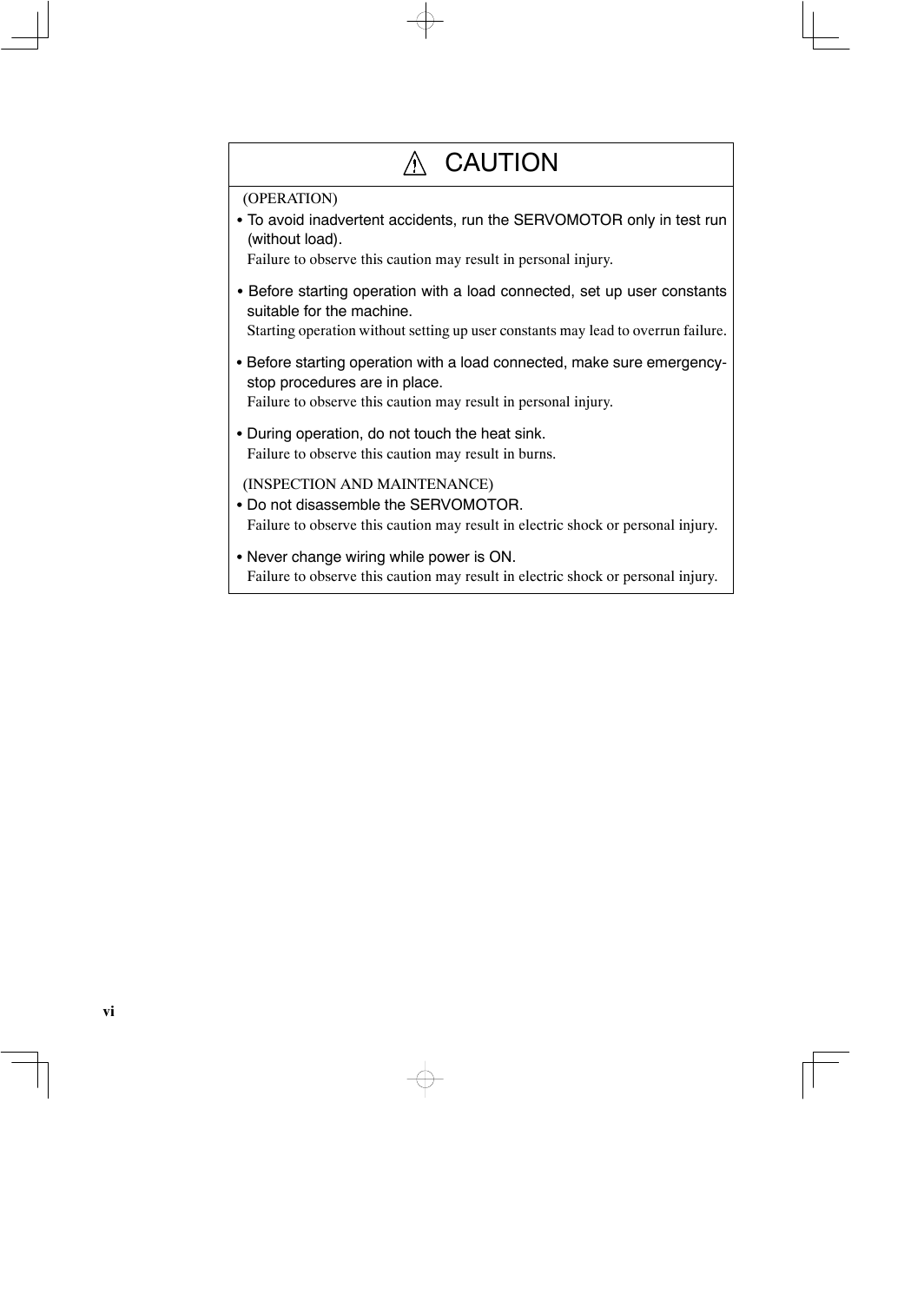
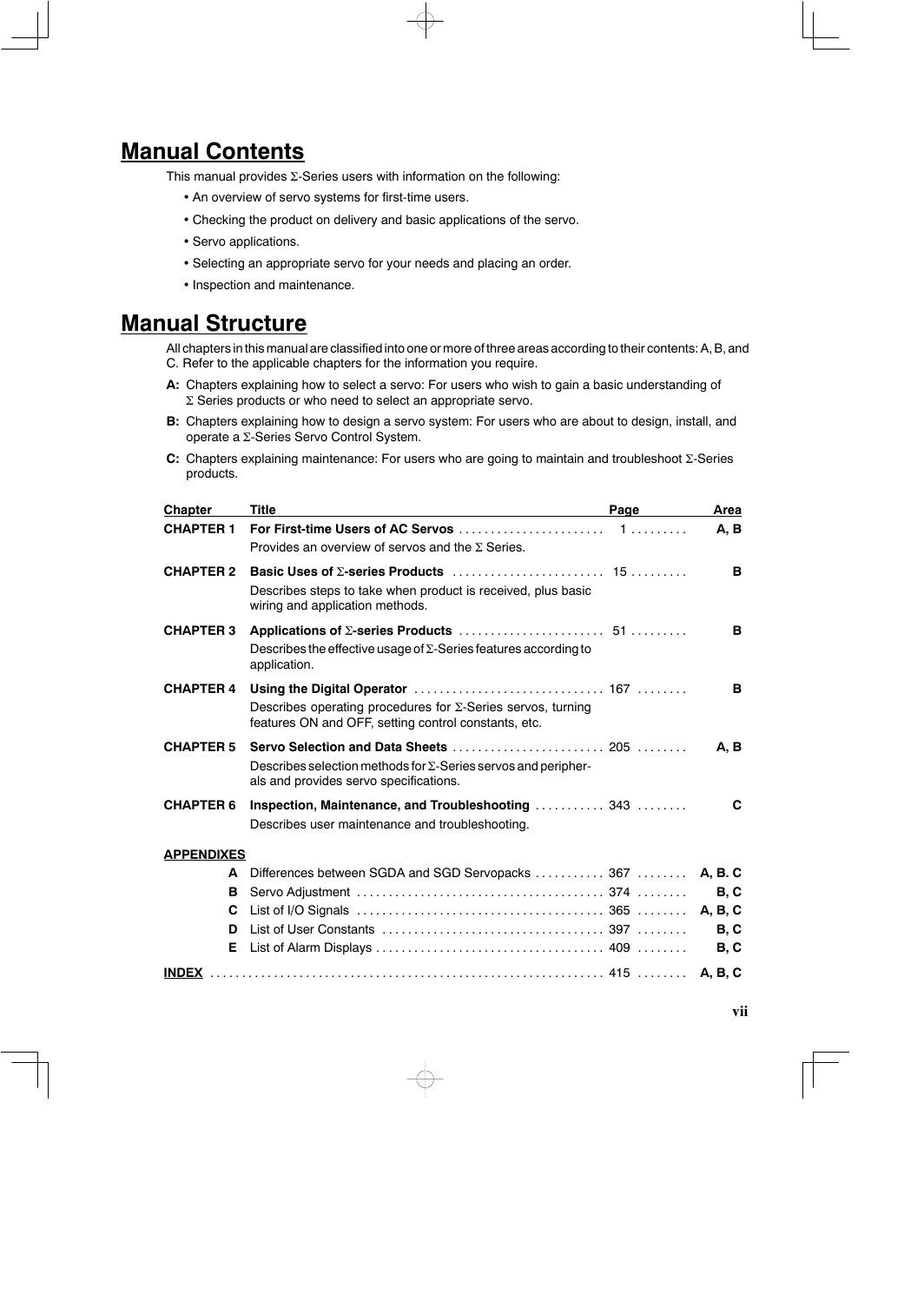
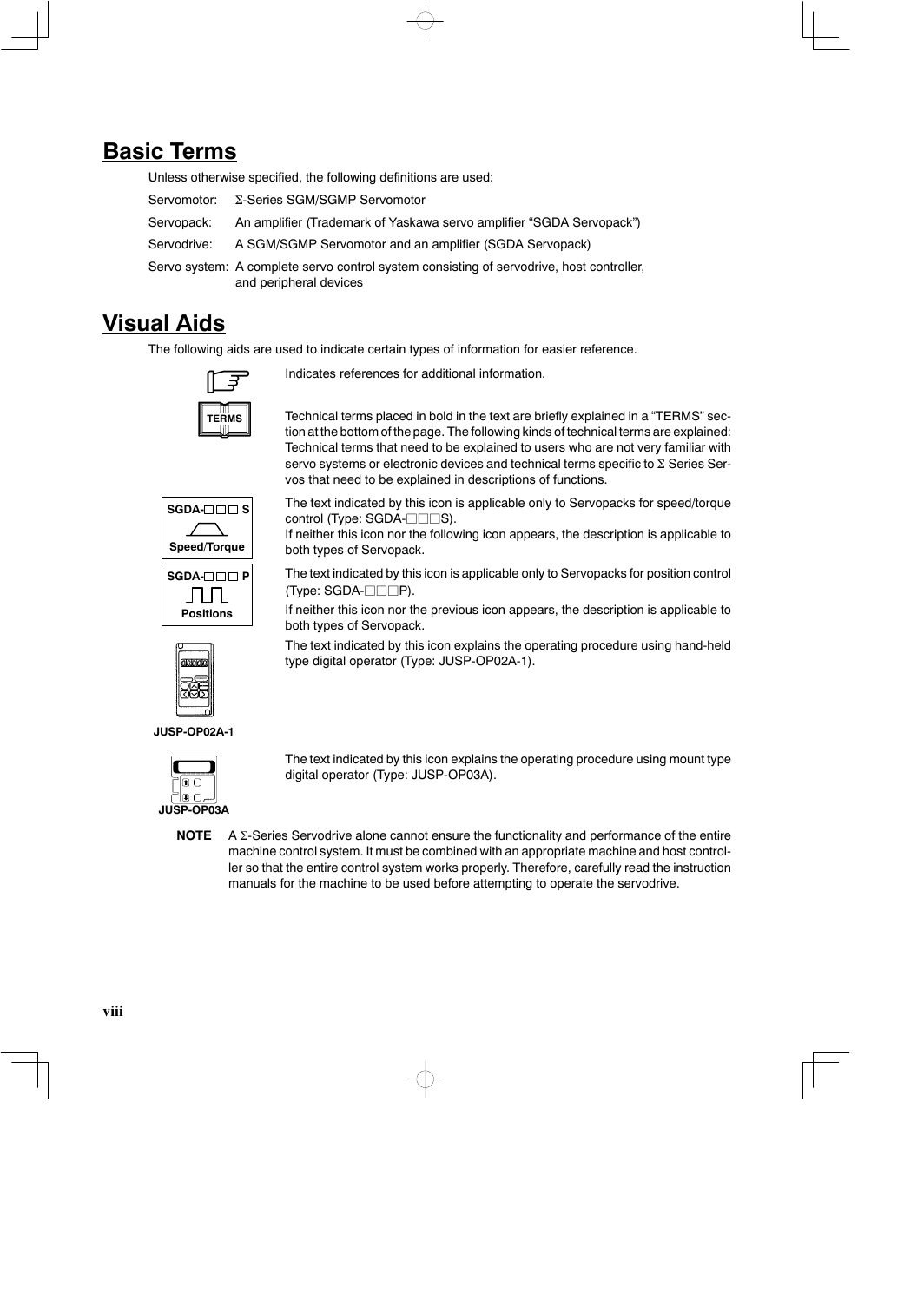
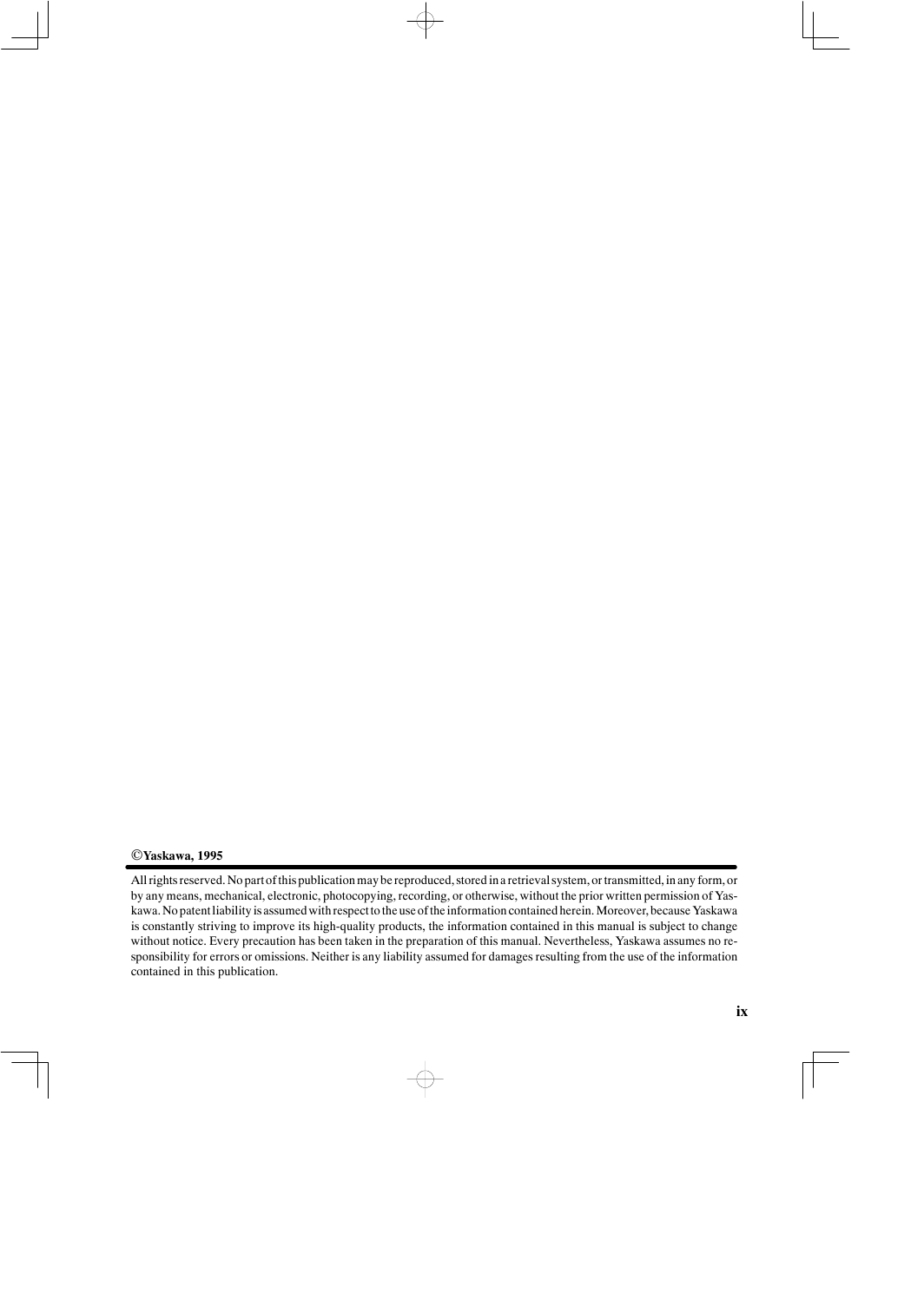








 2023年江西萍乡中考道德与法治真题及答案.doc
2023年江西萍乡中考道德与法治真题及答案.doc 2012年重庆南川中考生物真题及答案.doc
2012年重庆南川中考生物真题及答案.doc 2013年江西师范大学地理学综合及文艺理论基础考研真题.doc
2013年江西师范大学地理学综合及文艺理论基础考研真题.doc 2020年四川甘孜小升初语文真题及答案I卷.doc
2020年四川甘孜小升初语文真题及答案I卷.doc 2020年注册岩土工程师专业基础考试真题及答案.doc
2020年注册岩土工程师专业基础考试真题及答案.doc 2023-2024学年福建省厦门市九年级上学期数学月考试题及答案.doc
2023-2024学年福建省厦门市九年级上学期数学月考试题及答案.doc 2021-2022学年辽宁省沈阳市大东区九年级上学期语文期末试题及答案.doc
2021-2022学年辽宁省沈阳市大东区九年级上学期语文期末试题及答案.doc 2022-2023学年北京东城区初三第一学期物理期末试卷及答案.doc
2022-2023学年北京东城区初三第一学期物理期末试卷及答案.doc 2018上半年江西教师资格初中地理学科知识与教学能力真题及答案.doc
2018上半年江西教师资格初中地理学科知识与教学能力真题及答案.doc 2012年河北国家公务员申论考试真题及答案-省级.doc
2012年河北国家公务员申论考试真题及答案-省级.doc 2020-2021学年江苏省扬州市江都区邵樊片九年级上学期数学第一次质量检测试题及答案.doc
2020-2021学年江苏省扬州市江都区邵樊片九年级上学期数学第一次质量检测试题及答案.doc 2022下半年黑龙江教师资格证中学综合素质真题及答案.doc
2022下半年黑龙江教师资格证中学综合素质真题及答案.doc